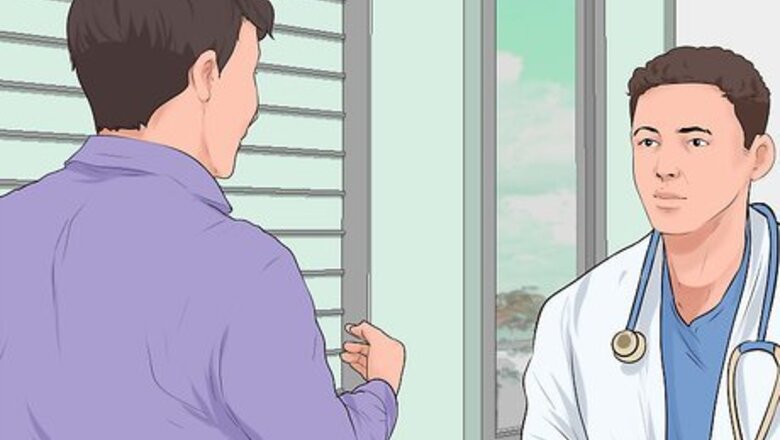
views
X
Trustworthy Source
PubMed Central
Journal archive from the U.S. National Institutes of Health
Go to source
Experts say that a combination of strength training exercises and proper nutrition can help you build muscle mass even if you have diabetes. Before you begin a new exercise program or diet, talk to your doctor to make sure the changes are right for you. Additionally, manage your blood sugar levels to help support your muscle growth and overall health.
Preparing to Exercise
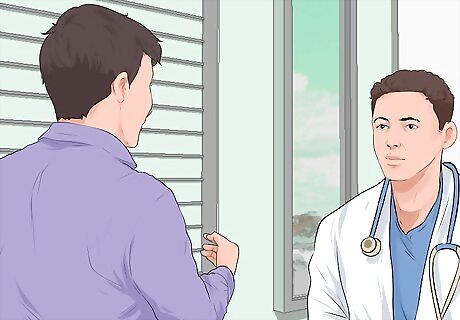
Visit your doctor. Although physical activity is good for people suffering from diabetes, you should clear it with your doctor before doing more intense workouts like weight training. Your doctor will perform an exam to determine if you're healthy enough for exercise. According to the American Diabetes Association, your doctor may advise against weight training if you have the following diabetes complications. If your doctor advises against weight training, that doesn't mean you can't be in shape- try lighter activities like walking or jogging. Retinopathy. This condition causes capillaries in the retina to balloon in size and form pouches. Weightlifting is usually not advised with this condition because the strain of lifting can burst the pouches and damage the eye. Neuropathy. This condition affects the body's nervous system and inhibits body systems from working properly. Dehydration makes this condition worse, so your doctor may advise against exercising or will recommend that you take adequate breaks to prevent complications. High blood pressure. Heavy lifting can over strain your body if you have high blood pressure. Your doctor may recommend training with lighter weights and cardio exercises to get your blood pressure down before allowing you to move on to heavy weights.
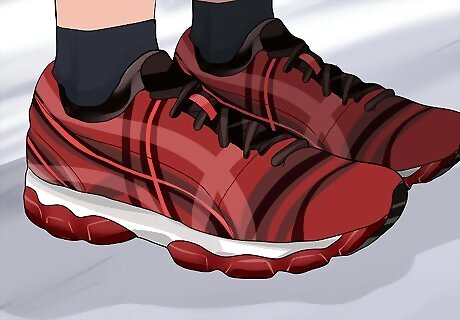
Get a good pair of shoes. If you have diabetes, you know that wounds can take a long time to heal and can easily get infected. If you workout with bad shoes, blisters and abrasions can form on your feet and cause potentially serious complications. To prevent this, always practice good foot care when working out. Get a pair of shoes with good cushioning. They should fit well- shoes that are too big or small will rub against your feet and cause abrasions. When trying on a pair of shoes, walk around and make sure there are no pressure points where the shoe rubs against your foot. Always check your shoes for pebbles or other objects before putting them on. Also wear smooth socks, and don't reuse them before washing. Sweaty socks can increase your risk for athlete's foot and other infections.
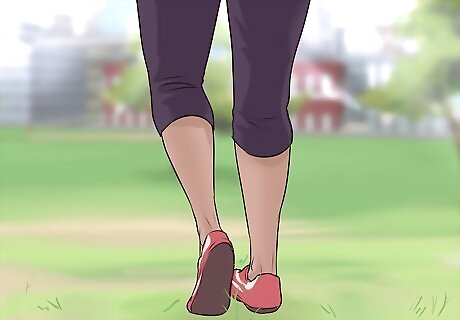
Learn how your body reacts to physical activity. If you've been active before, you might already know this. But if you've been inactive for a while, you may not know how exercise will affect your body. Before starting any kind of weight training regimen, you should start out with light exercises like a brisk walk. Test your blood sugar before, during, and after the walk. If your blood sugar doesn't drop too low, you can move on to exercising with light weights. Again, test your blood sugar before, during, and after. If your body tolerates this, and your doctor has cleared you for physical activity, then you can start working to build muscle.
Building Muscle with Exercise
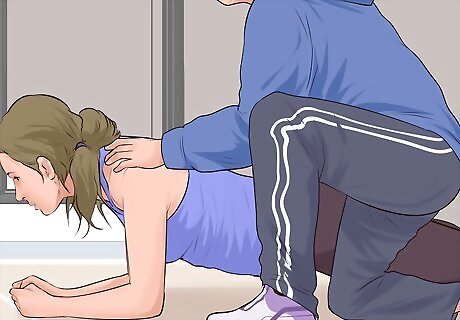
Consider using a personal trainer. This isn't necessary, but it will be very helpful, especially if you're new to weight training. A personal trainer can talk with you about your goals and design workouts to help you reach them. Most gyms have personal trainers on staff, so ask about these services at your gym. Make sure you inform a personal trainer about your diabetes. This will help him design workouts that will work best for you. It is also important for safety, because your trainer can monitor you for signs of hypoglycemia or other complications.
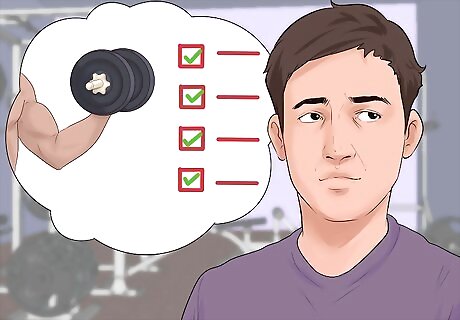
Learn the general rules for weight training. When working with weights, aim to do two or three sets of 8-12 repetitions within each set. Let your body rest for about a minute in between sets. When lifting, breathe out when you perform the lift or exertion, and breathe in when returning to your start position. You can apply these general guidelines to any weight-based workout.
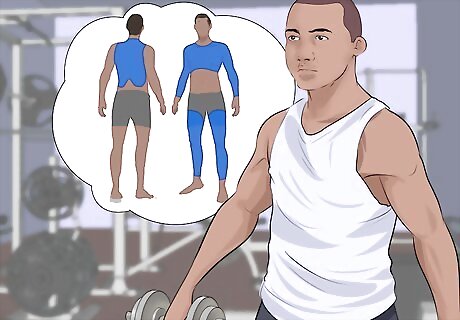
Focus on the largest muscle groups. This focus will give you faster results over your whole body. The major areas you should concentrate on are the back, chest, arms, and legs. There are several workouts you can do to train each of these areas and increase your overall muscle mass.
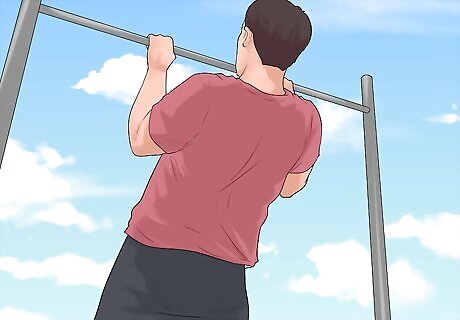
Train your back. While beginners to weight training often overlook the back, it is important for balanced upper body strength. There are large muscles here that can be strengthened and toned with several good workouts. Pull-ups. This simple exercise can be performed with only a bar and no other equipment. It trains the muscles of your upper and mid back. Grasp the bar with your hands roughly shoulder-width apart, then pull your chin over the bar. Make sure you keep your shoulder blades pinched together to ensure that you are keeping the workout focused on your back muscles. As an added bonus, pull-ups will strengthen your biceps as well. See Do Pullups for a more detailed description of performing pull-ups. Lat Pull-down. This workout is similar to a pull-up, except it is done sitting down with a machine. Grab the bar with your hands a bit wider than shoulder-width apart. Then pull the bar down to your chest and smoothly raise it again. Cable row. With this workout, you'll sit down on a bench and pull a weighted handle towards you. This workout trains the middle back, as well as the biceps. Click here for a video description of this workout. Shrugs. This workout will train your trapezius, the muscle between your neck and shoulders. To perform a shrug, stand with your feet shoulder-width apart. Hold a barbell, or a dumbbell in each hand. Then raise your shoulders to your ears.
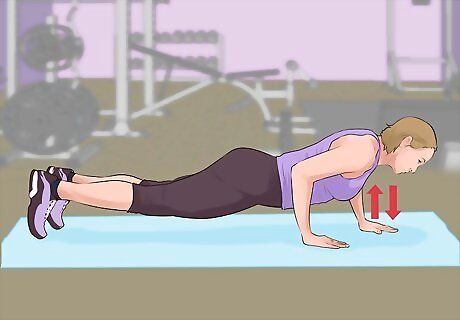
Train your chest. The chest contains the pectoralis major and minor muscles. These are large muscles that can add a lot of mass if trained properly. Try the following workouts to increase the size and strength of your chest. Pushups. You don't need any equipment for this workout, just the floor. It will train your chest, as well as your triceps. Read Do a Push Up for a detailed description of proper technique and variations of this workout. Pushups are also a good way to warm up before lifting heavier weights. Dumbbell press. This is similar to a pushup, except it is done on a bench with dumbbells. Lay back on a bench with a dumbbell in each hand. For your starting position, hold the dumbbells just above your shoulders. Then press your hands up and have the dumbbells touch above your chest before returning to the start position. Pectoral Flyes. This workout is done with a machine. You sit upright on a bench and place your hands on the pads or handles that will be on each side of you. Then you push forward and have your hands meet in front of you. This exercise isolates the chest more than pushups or the dumbbell press, so use it if you want to focus on the chest.
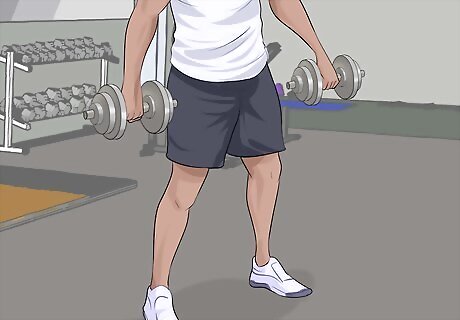
Train your arms. The two major muscle groups in your arms are the biceps and triceps. You should train both groups to strengthen your arms and build muscle mass. Several of the exercises already mentioned will also train your arms: pullups and pull downs will train your biceps, and pushups and dumbbell presses will train your triceps. In addition, there are other exercises that will isolate the arm muscles and train them specifically. Bicep curls. With this exercise, you will isolate the biceps. You can perform this exercise standing or sitting. Take a dumbbell in each hand and start with your arms at your sides. Then bend your arms at the elbows, bringing your hands up to your shoulders. Click here for an instructional video demonstrating a proper curl. Tricep push downs. This exercise isolates the triceps and is done with a machine. Grab either a bar or rope attached to a weight. Your starting position should be with your hands in front of you about chest-height. Then, using only your elbows, push the bar down to your hips before returning to the start position.
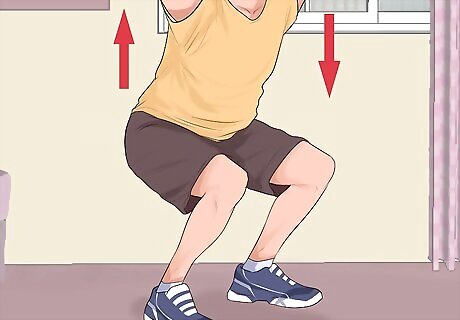
Train your legs. Some of the biggest muscles in your body are in your legs, so training this area will give you a big increase in muscle mass. There are numerous workouts you can choose from, all of which will train your legs in different ways. Squats. This workout primarily trains the quads and glutes, but it also works the entire leg and lower back. Read Do a Squat and watch this video to learn the proper technique before trying this. It would also be a good idea to consult a trainer at the gym to instruct you- it is a great workout, but you can seriously hurt your knees, back, and neck if you don't use proper form. Leg extensions. This workout trains the quads. It involves placing your feet into a machine. Then you extend your legs forward, which will lift a weight attached to a cable. Lunges. This workout will train your hamstrings, on the back of your leg. To perform the workout, hold a dumbbell in each hand. Then stand with your feet shoulder-width apart with your arms at your sides. Take a big step forward with one leg, then bring your other leg forward so you are standing with your feet shoulder-width again. Read Do a Front Lunge Exercise for more details on this workout. Calf raises. This workout will train your calves, which are on the lower part of your leg. They can be done either with a machine or by just holding a weight. To perform the workout, place your feet halfway onto a ledge so your heels dangle off the back. Then, either holding a weight or using a machine, shift your weight to the balls of your feet and lift your heels up. Then return to the starting position with your heels dangling off the side of the ledge.
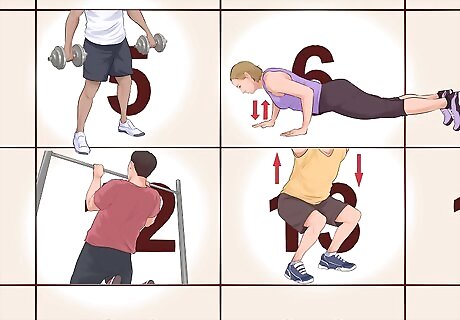
Vary your workouts. When you workout with the same exercises for several weeks, your muscles start to adjust, and the exercises won't give you great results anymore. This is called a plateau. To avoid this, don't let your muscles get used to the workout. Perform only one or two of these suggested workouts per muscle group at a time. Then in a few weeks, replace the exercises with a new one. By keeping your muscles guessing, you'll ensure that you see maximum results from your workout regimen.
Staying Safe While Exercising
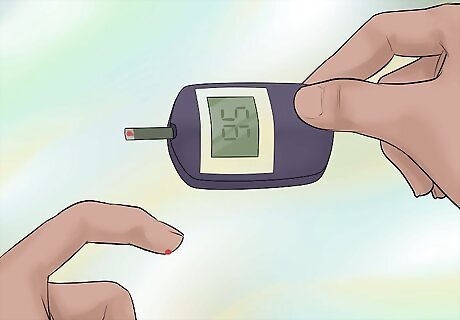
Monitor your blood sugar. You should continue to check your blood sugar before and after working out, even when you've been exercising for a while. If you being noticing that your blood sugar drops a lot during workouts, you should consult your doctor for the best action to take.
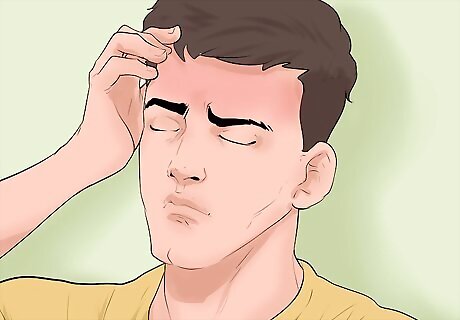
Watch for signs of hypoglycemia. Exercise can lead to a sharp drop in blood sugar, or hypoglycemia. This can lead to fainting or a diabetic coma. If you experience any of these symptoms, stop working out immediately and test your blood sugar. Dizziness and confusion. Shakiness and muscle weakness. Extreme hunger. A headache. Irritability. A pounding heartbeat. Pale skin.
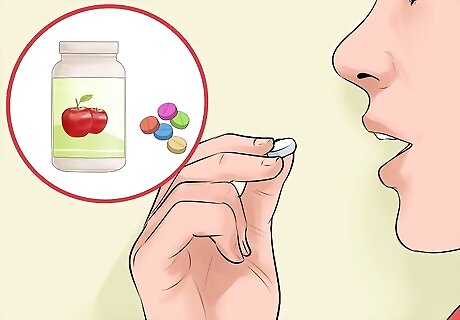
Keep a source of carbohydrates with you when you exercise. If you feel hypoglycemic, test your blood sugar. If it is too low, take a rest and eat this emergency snack. It will help bring your blood sugar back up and prevent further complications. There are a number of sources of carbohydrates that you could use to treat hypoglycemia. A few pieces of hard candy (not sugar-free). 1/2 cup of a soft drink. 1/2 cup fruit juice. 1 cup skim milk. Glucose tablets designed to treat hypoglycemia.
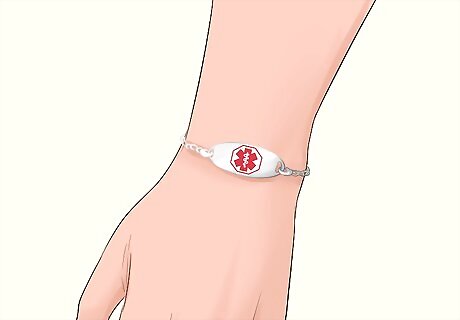
Wear a medical identification bracelet. This will let any emergency personnel know that you are diabetic. This is important because if you experience hypoglycemia, you could faint. If first responders know that you are diabetic, they can treat you more effectively. Consider wearing this sort of identification while working out just in case of emergencies.
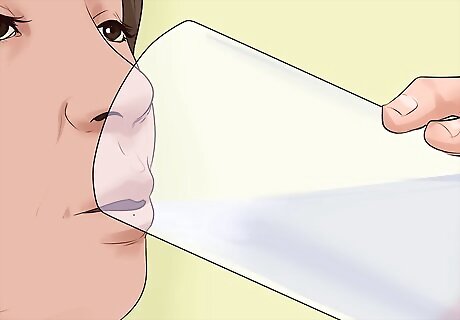
Drink plenty of water. Staying hydrated is an essential part of exercising safely. Be sure to replace all of the water you're sweating out while exercising. Be on the lookout for the following symptoms of dehydration. Dizziness or confusion. Dry mouth and swollen tongue. Fatigue. Decreased or ceased sweating.
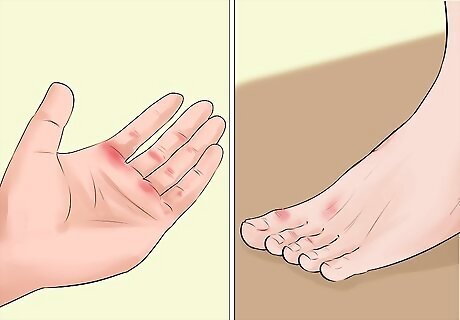
Check your body for abrasions or blisters after every workout. These minor injuries can be very slow to heal if you have diabetes and could get infected if left untreated. Be sure to inspect your body for any injuries after every workout. Focus especially on your hands and feet, since these will be stressed the most during your workout. If you find one, see your doctor as soon as possible so he can properly clean and wrap the wound.

Get adequate rest. With or without diabetes, rest is essential for any weight training program. You have to give your body adequate rest time to repair itself after workouts. Otherwise, not only will you not build muscle, but you could seriously hurt yourself. When doing a weight training program, aim to workout every other day. That will allow your body to rebuild its muscles so you build the muscle mass you're looking for.
Eating to Build Muscle
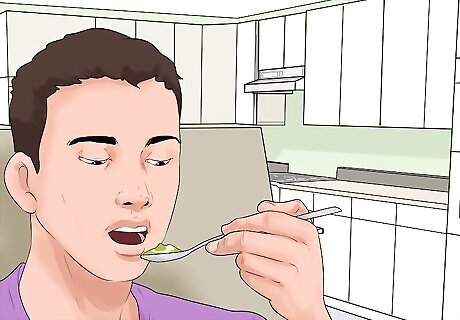
Have a good meal after every workout. Exercising depletes the body of essential nutrients and fluids. In order to make your workout successful, you have to replace these to help your body recover and build muscle. Use the ingredients suggested in this section to put together a high-quality meal that will help you build muscle and avoid affecting your blood sugar.
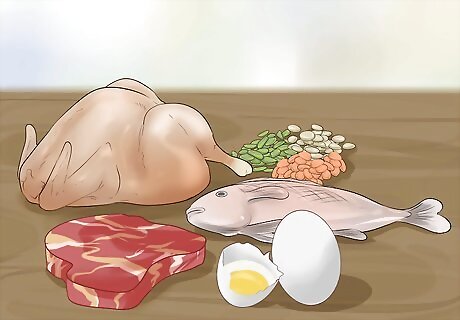
Eat plenty of protein. Protein is the essential ingredient for building muscle. While doing your weight training regimen, include proteins in every one of your meals to give your body the building blocks it needs to strengthen your muscles. There are many options for including protein in your diet. Nuts. Any kind of nut is high in protein. You can't go wrong including these in your meals or just snacking on them throughout the day. Beans. Not only do these give you a high dose of protein, but they have a low glycemic index, so they won't affect your blood sugar. If using canned beans, be sure to drain the liquid so you don't overdose on sodium. Fat-free dairy products. Milk and yogurt are great sources of protein. Have a glass of milk or a cup of yogurt for an easy dose of protein. Fish. Salmon, tuna, and herring are usually considered the best options for protein, but any fish will do as well. Make sure you avoid fried fish, however, or you'll consume saturated fats that could be harmful.
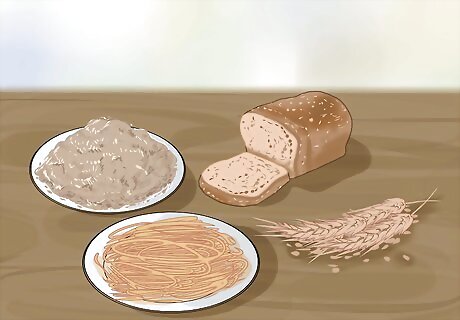
Get carbohydrates from whole wheat products. You need carbohydrates in your diet because without them, your body will use protein for energy. This will divert protein from your muscles and you won't build any mass. Carbohydrates from bleached or enriched products like white bread have a high glycemic index and will raise your blood sugar. Whole wheat products, however, will give you non-enriched carbohydrates. Eat whole wheat bread, pasta, and cereals to give yourself a good serving of carbohydrates.

Consume good fats. It is a fallacy that we should cut fat out of our diets. While saturated and trans fats should be avoided, mono and polyunsaturated fats are beneficial for your health. They can reduce your cholesterol levels and also help you build muscle. Try some of these foods for good sources of good fats. Avocados. Fish. Salmon and sardines contain high levels of omega-3 fatty acids. Olive oil. Seeds, especially sunflower, sesame, and pumpkin seeds.



















Comments
0 comment